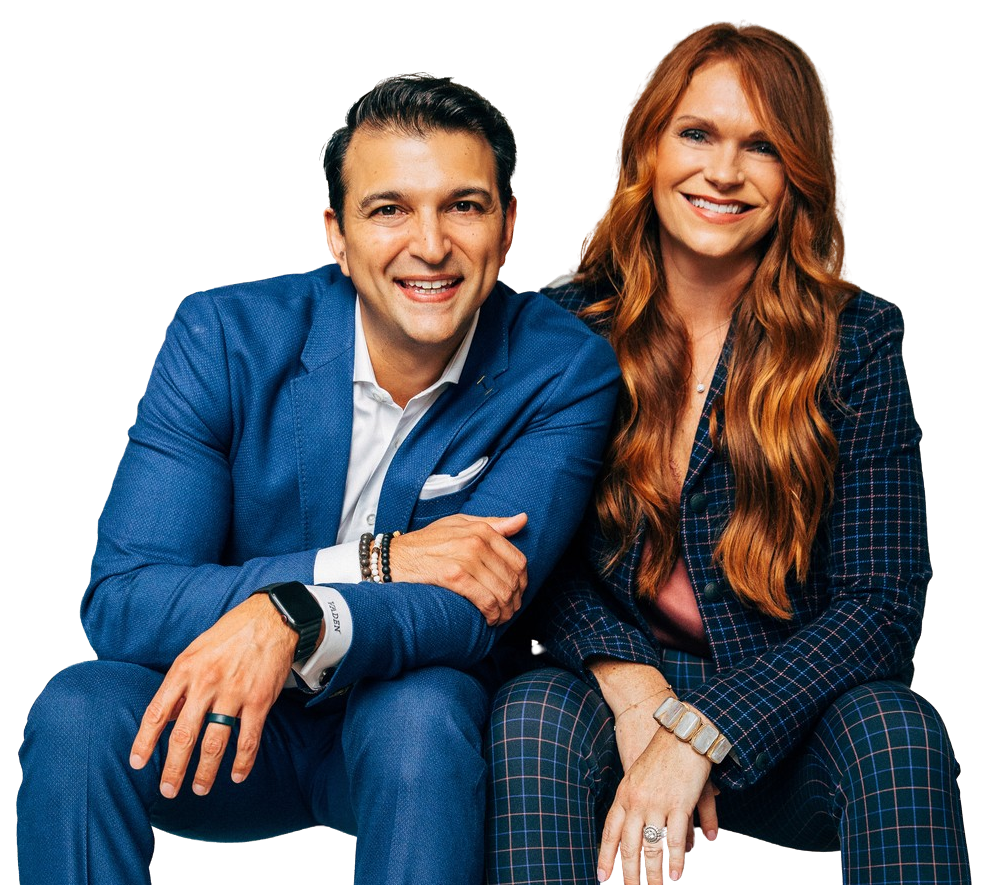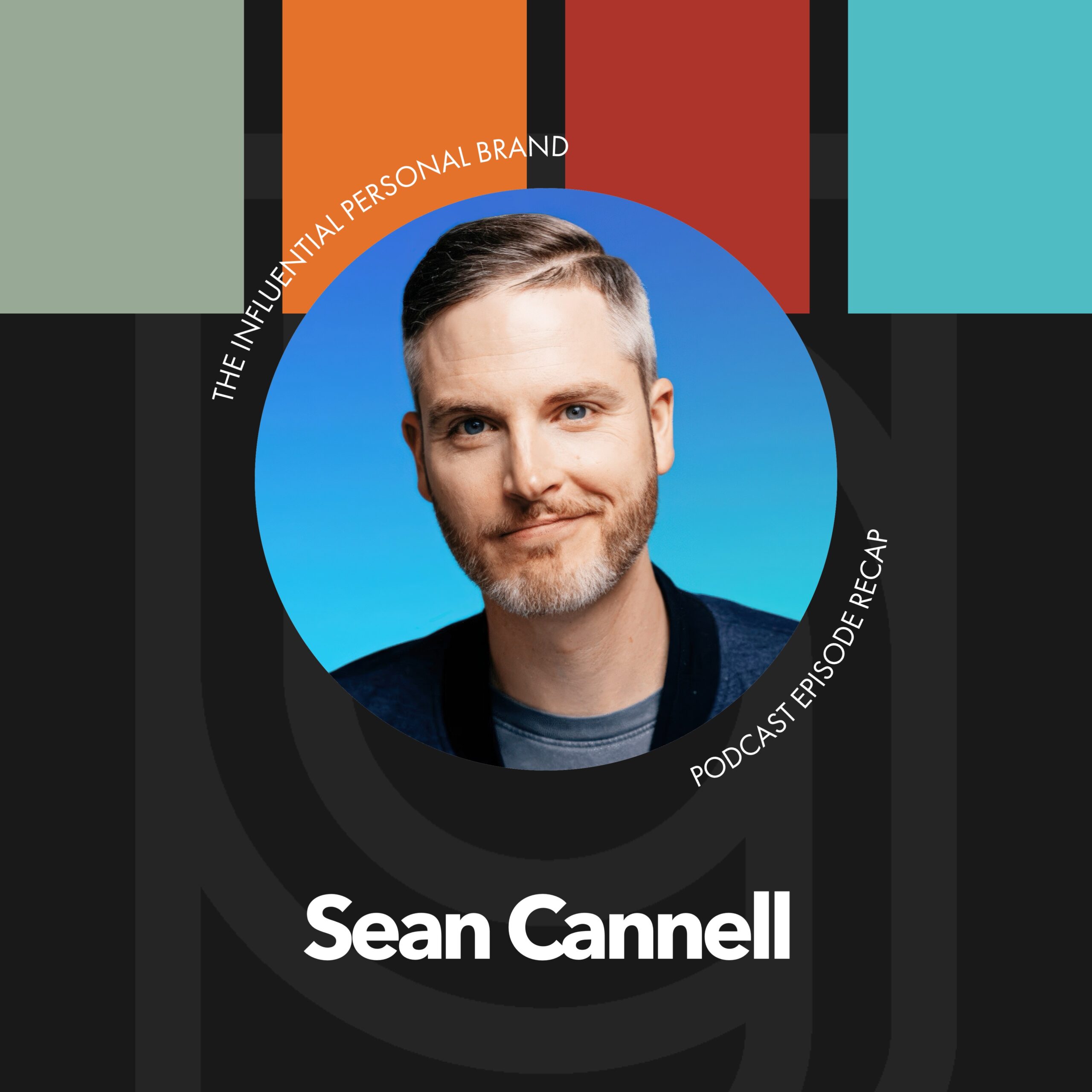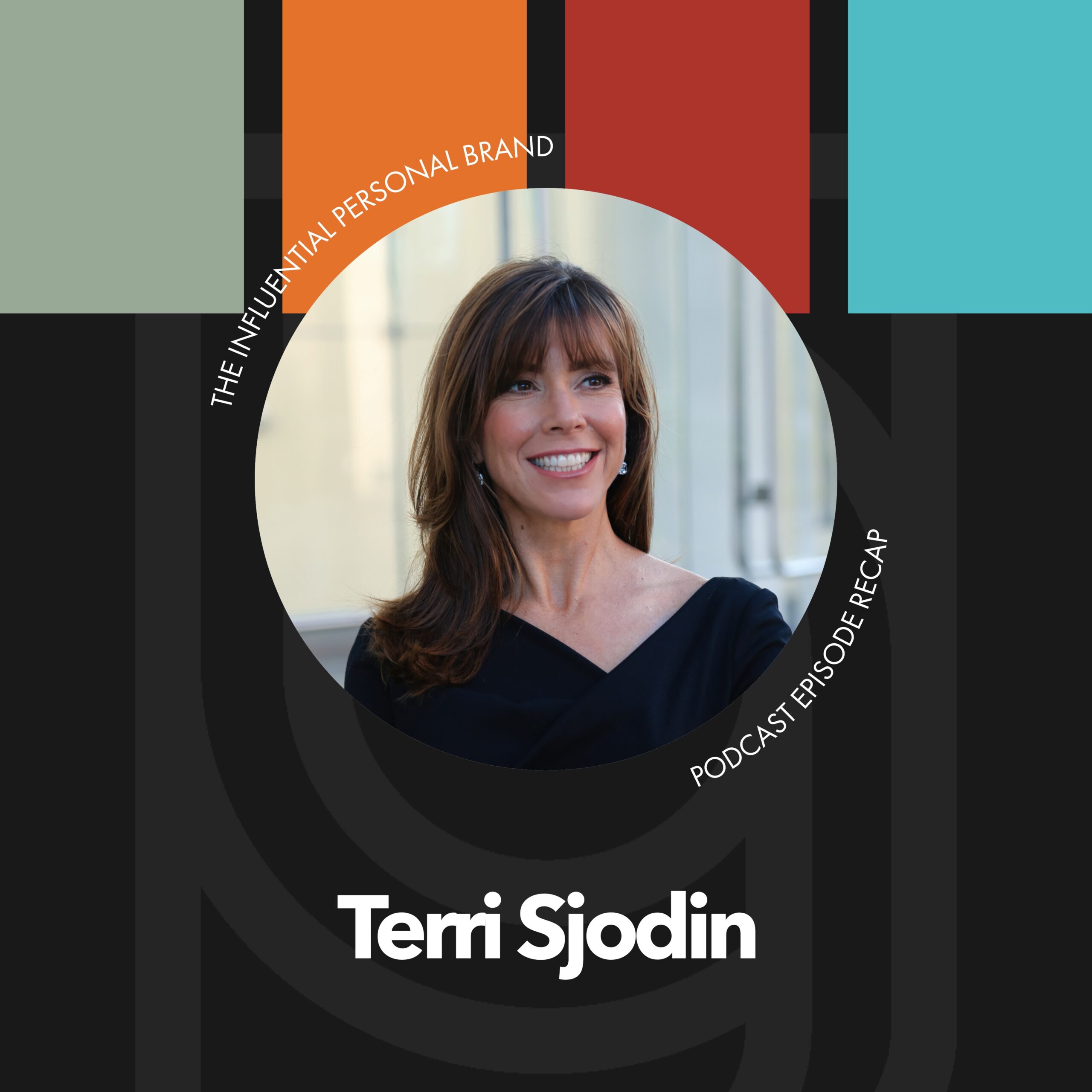RV (00:02):
And we are here influential, personal brand podcasts, recap. I love it. When AJs here, life is better when wifey is here, she of course is our CEO Xtrordinair. And we are breaking down the interview with Craig Valentine, which was a blast from the past, for me, someone who had a major shaping on my life and career early on. And so anyways, this was a chance to AJ got to listen into our interview. And we’re gonna, we’re going to share with you are our top three takeaways each and bay. Why don’t you go first?
AJV (00:38):
Okay. so formal these podcasts recaps, babe wifey. So formal and professional. Are we so my first one is actually something you said in the very beginning, which I then thought it was hilarious that he then talked about it later on. And he said this comment in the beginning, he said, what I realized really early on, I said, it’s not good enough to get ready. You have to stay ready. And then he used that exact same thing, like five minutes later when talking about creating statements that people don’t just remember that they can repeat. So my first two takeaways are kind of like a combo deal. And the first one is this concept of getting ready versus staying ready. And I think this is really, really important for the audience that we really want to serve. Because when you think about storytelling is not about just telling stories in a keynote, and that’s so much of what people prepare for.
AJV (01:37):
It’s like, I have to think about these stories for a book that I’m writing or a course I’m creating or a keynote. And those were very singular activities. And it’s like, what about the stories that you tell in everyday interviews or your content creation on social media or a podcast or TV or radio or whatever. And I think that’s really important. I’ve just being able to stay ready. So at any minute, if a reporter tweets you at 9:00 PM at night, that you could be ready to go for an interview at 11:00 PM, which is exactly what happened to us just a couple of months ago. And because we were ready, it landed on good morning, America, totally unexpected, but we were ready. Didn’t need to get ready. We were ready. And I think that’s just a really great story is if you get ready and you stay ready, then it’s easy to accept the opportunities as they fly by, because it would have been equally as easy for someone to go. I don’t know what I’m going to say for that and turn down I mega opportunity just because you weren’t ready. And so that was my first big takeaway. And also gave you a teaser to my second one that I’ll share in just a minute.
RV (02:47):
Well, that’s good. I mean, that is just as like being in that mindset of like, I can go at any moment. It reminds me what you said reminded me of our friend Navy seal Joe. And one time I asked him, you know, why don’t, why don’t you drink? And he just said, well, cause at any, any given moment, you know, I might have to defend somebody. I might have to do something
AJV (03:07):
That’s a different
RV (03:08):
Kind of stay ready. Right. But it’s like that when you’re a Navy seal, it’s like, you’re always
AJV (03:14):
Ready,
RV (03:14):
Always ready. So one of the things for me, I mean, Craig is I think one of the masters of teaching storytelling, and I think it’s part of the impact he’s had on my life has helped me tell a great story. And even after all these years, as I was listening to him, I realized I don’t always have a clear conflict in my stories and you need to have a clear conflict. And that was my takeaway, which I’ve, I’ve been reminded of by him before, but somehow still forget. And, and in any story like the story is in the struggle, the story is not what happens at the end. The story is this one step forward, two step back of what the main character is trying to accomplish. And the moment that the conflict gets established is the moment that something gets in the way of your goal.
RV (04:09):
And so you have to have a character who wants something who has a block. You know, we, we refer in our a world-class presentation craft. We talk about how you have, you have the main character and then you have the enemy. You, you have to have a main character. Who’s trying to achieve something. Who’s being blocked by an enemy, which doesn’t necessarily have to be a person, but often it is. But if your stories are falling flat, it’s because you don’t have a clear conflict, which means you either don’t you, you don’t have a clear picture of what the main character is trying to accomplish. And there’s not clarity about what is standing in that main characters way. And if you don’t have those two things, you don’t have a story. You’re just, you’re just sharing words. And that is so simple, so simple, but just really hit me as profound. And it’s like, gosh, I should know this. I should know better, but I just don’t. And I, and you just forget that the fundamental, so that you got to have a clear conflict. That was my first big one.
AJV (05:12):
Yeah. Well, on that note Craig talks a lot about this in the interview is the importance of both conflict, but then also character dialogue. And those were equal parts of a great story is like, yeah, the story needs conflict, but there also has to be some character development I E through dialogue. And so it’s helping get to know each point of the characters in the story, even if it’s only one character that conflict and dialogue are of equal importance. And I think that was a really unique part because often sometimes the heart of the story is missed because you only get a one-sided character perspective.
RV (05:52):
Yeah. That was that your second takeaway was dialogue.
AJV (05:57):
That was a side tangent.
RV (06:00):
Since you, since you went there, I’ll just do my second one. Cause that was, that was my second one was that dialogue was my big second takeaway because of exactly what you said is you flesh out the characters, you get to know them by knowing what they’re thinking and what they’re saying to each other, which again, you don’t always think about. So anyways, that was my second one. I did two in a row. Okay. Back to you.
AJV (06:22):
Yeah. So my second one was something that I said at the very beginning, because I thought they were, they were very much connected, but it’s this whole concept of, you know, don’t tell stories just to be remembered, but tell them in a way that can be repeated. So it’s creating statements little taglines but easily remembered, but also easily repeated statements that actually carry through conversations. And that’s a huge part of a brand recognition it’s that people don’t just remember that, you know, you talk about, you know, overcoming self-doubt or you talk about in our case, personal branding, but it’s like, we’ve got these statements that are defining part of our personal brand and it’s easy for people to repeat them because they’re catchy, they’re easy to remember, but they’re also easily repeated. And I thought that was really good. And so it’s like, what are the conversation centerpieces that you have in your personal brand and in your stories, but in your content that allow people to go YAG tweet that I’d retweet that it’s like, I post that on my social.
AJV (07:26):
It’s like, I would, I would talk about this. Like, this is a, this is a good conversation starter. And it even, it doesn’t even have to be all that catchy. Sometimes it just has to be somewhat controversial in terms of like, this is different. Like one of the things that caught my attention when listening to this podcast with Kregg is this whole concept of, you know, in our opinion, that personal branding is the future of marketing and that’s somewhat controversial. I’m going like really like really it’s the future of marketing. And it’s like, that allows someone to go. It’s like, Hey, there’s this firm out there that did this study. And they’re saying that personal branding is the future of marketing. It’s like that personal branding is the way to build trust. And so again, it’s, it doesn’t even have to be like a tagline for it to be catchy, but it’s gotta be interesting enough that people can remember it and repeat it and that they would want to. And I thought that was a really huge part of stories are there to get people engaged. But then what’s the point, what’s the takeaway of the story. And are you giving it and little snippets that people can remember and want to repeat?
RV (08:37):
Yeah. Amen. It’s like, what’s the story, but what’s the, what’s the point? What’s the takeaway? The story is like the entertaining part, but then the point is like the educational part or the inspirational, the part that adds real value to our life. And you know, we call them pillar points internally, obviously like those, those catchy, those catchy phrases, and that kind of points to my third takeaway, which is which was, was actually nothing about the technical stuff of what Craig was teaching related to how to tell a great story. It was his kind of catchy pillar point from his wife. Your dream is not for sale. And I have heard him tell that story so many times about you know, him trying to quit his job to go pursue his dream and, and his, his boss offering him more money and him almost taking it.
RV (09:29):
And then his wife saying your dream is not for sale. And that has stuck with me that has stuck with me for almost 20 years now, from the first time that I heard that. And that is so powerful as a concept that like, you know, if you have a dream and there’s something that you’re dreaming about, like you literally want, and, and it is placed on your heart, that this is the thing that you’re supposed to pursue. Don’t let anything distract you from it. Don’t let anything pull you off of it. Don’t let anything convince you that you’re not worthy of it or that you can’t have it. And certainly don’t go chasing money in as a, as a way of avoiding chasing the thing, you know, that you’re called to. And even though, you know, that wasn’t a technique that he was there to teach, you know, he’s teaching us secrets of storytelling to hear that story risk recounted over and over is just such a powerful reminder for me in my own life to just go, yeah, your dream is there for a reason, your dream is there because you’re supposed to pursue it.
RV (10:33):
You’re supposed to move in that direction. There’s other people that you inspire by doing it. There’s other people that you help by chasing after it just don’t allow yourself to get sidetracked with other stuff.
AJV (10:45):
That’s good. That’s good. All right. Well, I’m at this up my third one. And I find a line and I, again, this wasn’t necessarily new, but it was a great reminder for every single person who is listening to this podcast is that it is not about selling a product it’s about selling results. And the best way you can do that is in storytelling. And it’s like, if all you do is talk about your product. It’s like, people get burned out. It’s like, you can only talk about it so much, but it’s like, what are the results that you will achieve or experience because of your product or your service. And he goes, you know, he gets that great story about when he was buying his first car several decades ago. And the first dealership he went to, they talked all about the car right here are the features of the car.
AJV (11:34):
Here’s the gas mileage. Here’s the rates that it at a desk, second place. He went and said, why are you buying a new car? And he said, oh, you’re going to look good in this car. Just think about all the ladies you’re going to get in this car. But it was, it was the results, but it was also the story. Like when you tell story, you’re able to put yourself in the character, see and experience it. Like when you talk about, oh, in this car, you’re going to look so good. I just want you to imagine, like, for me, it’s like how clean and organized a new car would be with your two toddlers. And if you owed, you had that captain seat, you wouldn’t have to climb over the seat to get in the back, or you’re going to have this extra space.
AJV (12:13):
Like you can tell I’m a mom of two small kids right now, because that’s what appeals to me like that if you put me as the character in the seat of the car, it’s like, oh yeah, I want that. I want clean carpets again. Yeah. I want seats where my kid’s little legs, can’t kick the back of them. That, how do you get me bad versus just telling me about just safety features and just the components of a car, but it’s like, how do you use a story to put your audience as the character in the seat to help them actually experience what your product or service is without making it all about just the facts and features and components of what you do, but it’s, what is it going to give them in peace or happiness or in my case organization. Right? So it was like, what are those things? And how do you use stories to help sell results? Because at the end of the day, people aren’t buying your product, they’re buying what your product or service is going to do for them.
RV (13:13):
So good. So good. And just storytelling. I think it’s, it’s easy to underestimate the power of stories because they’re so simple. It’s easy to forget the fundamental parts of that should be in a story because you just overlook them. And, and, and certainly just easy to forget, to use stories in your selling, your writing, your emails, obviously your presentation. So listen to this episode, go back. If you didn’t and listened to the episode with Craig Valentine, it is fantastic. He is a gifted speaker and also extremely gifted at teaching the art of story, which will help you and make a difference as does every guest. At least that is our hope every week here on the influential personal brand podcast. That’s all for this one comeback soon. We’ll see you then bye-bye.


















